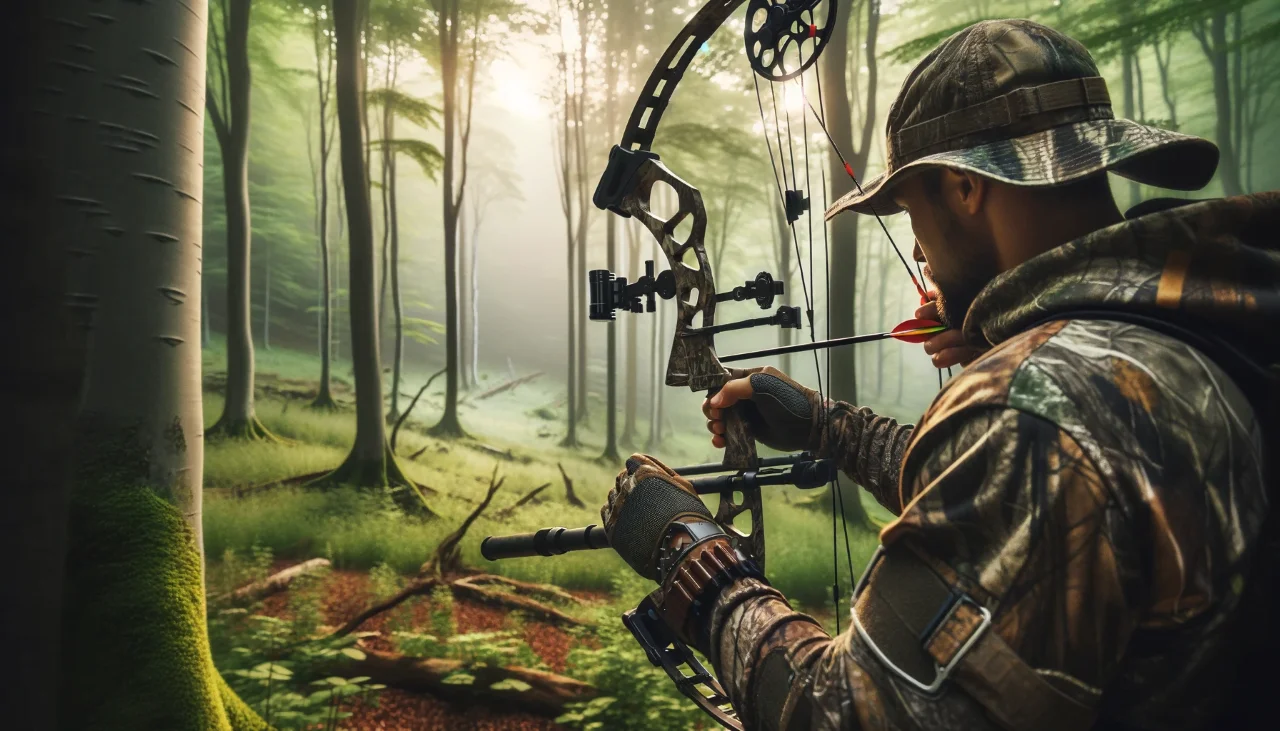
Table of Contents
Welcome to the exciting world of archery hunting! In this comprehensive guide, we will embark on an exhilarating journey exploring the nuances of this ancient practice that has evolved into a modern sporting activity. Whether you’re a seasoned hunter or a beginner eager to learn, this article is designed to enhance your understanding and passion for archery hunting.
Archery hunting is the art of pursuing and harvesting game animals using a bow and arrow. This method of hunting dates back thousands of years and has a rich history that spans across various cultures and continents. Today, it is celebrated not only as a method of hunting but also as a sport that requires skill, precision, and a deep respect for nature.
Why choose a bow over a rifle? The answer lies in the unique challenges and rewards that archery hunting offers. It’s a test of skill, patience, and stealth. Archers often speak of the profound connection they feel with the wilderness, a bond that is strengthened through the quiet and intimate nature of this hunting method.
Embarking on your archery hunting journey requires preparation, both in terms of equipment and skills.
Understand the local laws and obtain the necessary hunting licenses. Each region has specific regulations regarding hunting seasons, legal game, and hunting methods.
Moving quietly and cautiously through the hunting area, using natural cover, and understanding wind direction are key.
Elevated tree stands offer a good vantage point, while ground blinds are great for concealment.
Using calls to attract game or decoys to draw them into range can be highly effective.
Respect for wildlife and ethical hunting practices are paramount. This includes:
Understanding signs of a hit animal and tracking it responsibly is a crucial skill.
Learn how to properly field dress and process the game for consumption or trophy.
The tradition of sharing the harvest with family, friends, or donating to those in need is a rewarding aspect of hunting.
Archery hunting is a challenging and fulfilling sport that connects us with our primal roots and the natural world. It teaches patience, respect for nature, and offers a unique way to experience the great outdoors.
A: For beginners, a compound bow is often recommended due to its adjustable draw weight and let-off feature, which makes it easier to handle. It’s important to choose a bow that matches your draw length and strength. Visiting a local archery shop for a fitting and advice can be very helpful.
A: Yes, when practiced responsibly. Ethical archery hunting involves adhering to local wildlife laws, respecting the animal, ensuring you have the right skill level for a clean and humane kill, and using every part of the animal you can.
A: In most regions, yes. The requirements for a hunting license vary by location and game species. It’s essential to check with your local wildlife agency for specific regulations and required hunter education courses.
A: Regular practice is key. Focus on improving your accuracy and consistency at various distances. Additionally, learning about animal behavior, tracking, and wilderness survival can enhance your hunting experience.
A: This depends on the local hunting seasons and regulations. While the actual hunting is season-specific, you can practice archery year-round to hone your skills.
A: Always be aware of your target and what lies beyond it. Use a safety harness when hunting from a tree stand, carry a first aid kit, inform someone about your hunting location and expected return time, and be prepared for weather changes and emergencies.
A: The choice depends on your bow type and the game you’re hunting. Heavier broadheads are typically used for larger game. It’s best to seek advice from experienced archers or a specialized archery store.
A: Stalking involves slowly and stealthily following game, while still hunting refers to remaining motionless and waiting for the game to come into range.
A: Practice makes perfect. Ensure you’re proficient with your bow, understand the animal’s anatomy for proper shot placement, and only take shots within your effective range.
A: After a successful hunt, promptly and properly field dress the animal to preserve the meat. Practice ethical hunting by utilizing as much of the animal as possible and respecting the environment.
Archery hunting is a timeless pursuit that allows hunters to connect with nature, challenge their skills, and experience the thrill of a close-range hunt. By understanding the equipment, mastering shooting techniques, and employing effective hunting strategies, you can embark on a rewarding archery hunting journey. Embrace the challenge, respect the game, and enjoy the beauty of the natural world as you become a skilled and ethical bowhunter.
A hunting rifle is more than just a tool it’s a trusted companion in the…
Choosing the best tree stands under $300 is one of the smartest investments a hunter…
When dark clouds roll in and rain starts falling, many hunters pack up their gear…
Competitive shooting requires skill, precision, and the right equipment. Whether you're a seasoned competitor or…
The world of archery is undergoing an exciting evolution. What once were purely mechanical tools…
Welcome to the latest 2025 hunting-season guide, tailored for readers of TheShootingGears. Whether you’re carving…
This website uses cookies.